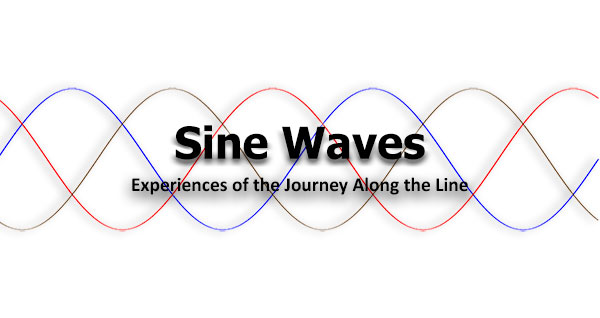In the early 80's, I was fortunate to get a job as an "Outside Plant Technician" at McMurdo Station, Antarctica. I was one of three linemen working out of the power plant.
We maintained the overhead (mostly) 4160/2400-volt system and equipment. The power plant crew stayed, on site, for an entire year, so we were part of the small "winter-over crew". It was an interesting time, and place.
This was before GPS, cell phones and personal computers. There was no telephone communication with the rest of the world, only radio communication.
The first trip there (I went back two years later for a second winter-over) we built a new line to redo the direction of feed from the new power plant which was in its first year of full-time service.
We had a bucket truck that had been mounted on a military 10-wheeler with no parking brake. Most vehicles had the parking brake dismantled since they tended to freeze up all the time. Wheel chocks were needed for everything. Anyway, this bucket truck also had a PTO that would fall out of gear when it was in use. We quickly learned never to go up in the bucket unless someone could stay on the ground with the truck. We also had to carry cribbing for the outriggers because, even on a perfectly flat spot, they barely reached the ground.
Oftentimes, we would climb rather than use the bucket because it was simpler and just as fast.
The new line we pulled was a spacer cable system with copper conductor (#2 and 4/0) insulated for 4kv. The spacers only fit the 4/0, so we had to build up the #2 to get the spacers to stay put.
We had a bosun's chair with two wheels and a wooden seat. I would climb a pole and have the chair sent up on the handline. I placed the chair on the messenger, 3/8" guy, and then had to transition into the chair. There was no belt, so I would put one safety around the chair and one around the messenger and conductors. We would tie a line to the chair and drop it to the folks on the ground, so that they could help pull me along the span to the next pole. The hardest part was climbing into or out of a swinging chair.
When I returned to McMurdo for my second stay, that bucket truck was gone. Instead, there was a new digger derrick on an Autocar truck. It had air brakes, so we did have a parking brake. You had to be very diligent about bleeding the air tanks, so the brakes wouldn't freeze up. All vehicles were plugged in all the time unless they were left running.
Most of the buildings were three-phase so we had a lot of large platform transformer banks. One outbuilding, which was generally un-manned, had about a mile of armored single-phase primary going to a dry transformer that sat on the ground. There were no ditches because McMurdo is on volcanic rock. Plus, the permafrost is at about 1/2 ". This transformer had ventilation slits in the metal cabinet. After it had been in service a few months, the thing failed. We discovered the wind had filled the interior of the cabinet with snow. It had built up to the point that the heat from the windings melted enough snow to short it out. Luckily, we were able to remove the guts and set a regular 25 kva pole-mounted transformer in the same cabinet.
I learned a lot during my time on the "ice".
Dick Weaver – Retired Lineman

